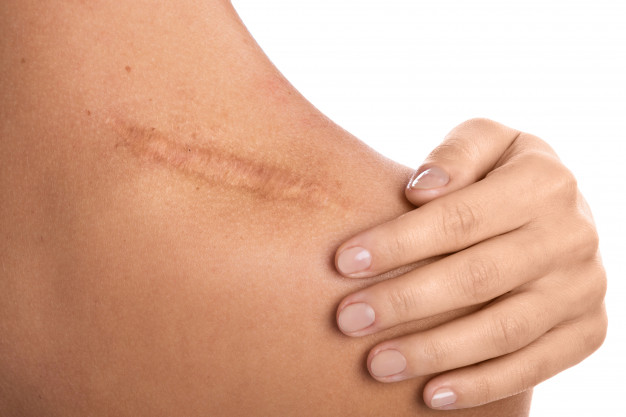
Scars are formed when body tries to heal deeper or penetrating injuries by formation of thick tissue than normal skin. It is a natural process of healing to repair the damage done to the skin. Newly formed scars are red or light pink in colour with slight itching. As the scar matures, there is more deposition of collagen and fibrous tissue giving them white colour.
TYPES OF SCARS
Different types of scars are seen depending on multiple factors like size, depth and thickness.
- Flat Scars: also called as cicatricial scar. Causes are burns, fibrosing alopecia, morphea etc.
- Hypertrophic Scars: They are raised above the skin surface. Over a period of time, these scars tend to flatten. They never cross the original margin. At starting stages, silicon gel helps in decreasing the size.
- Atrophic scar: Sunken or pitted looked scar. Most commonly seen with acne scars. The type of acne scars are ice pick scar, rolling scar and boxcar scars. Treated with skin resurfacing techniques like lasers or radiofrequency
- Keloid scars: The scar rises above the surface of the skin. It usually extends the boundaries of the scar. Mobility is decreased when it is formed over joints. Best treated by Intralesional Steroid and if larger, surgical debulking is the best option.
- Contracture scars: usually after a burn, the formation of the skin is tighter and thicker making it difficult to move. Contracture scar are the scars that limits the movement.
- Stretch marks: these are also type of scars which develop due to excessive stretching of the skin.
TREATMENT:
Depending on the type of scar, treatment varies. Oral antihistamines if there’s itching. Intralesional Steroid with triamcinolone is given in keloid. Other procedures done are surgical removal, skin grafts, excision, or laser.
